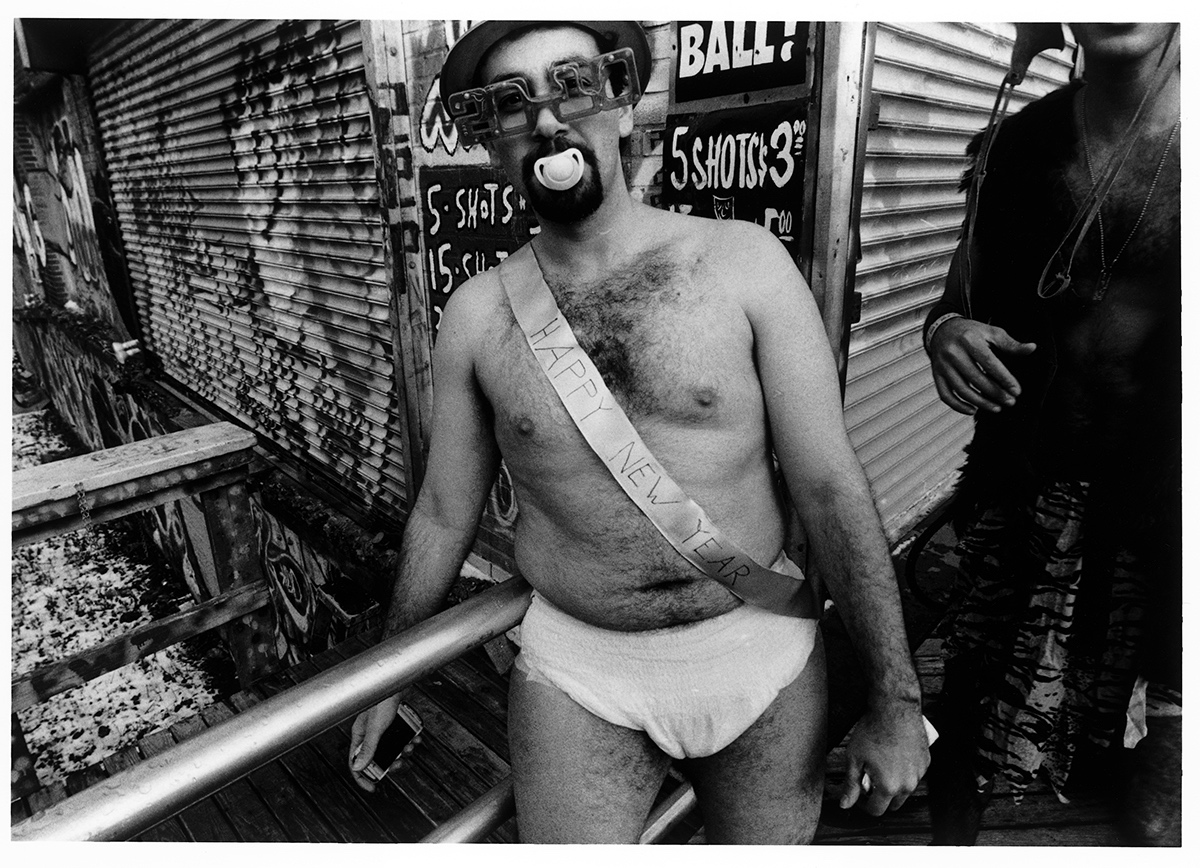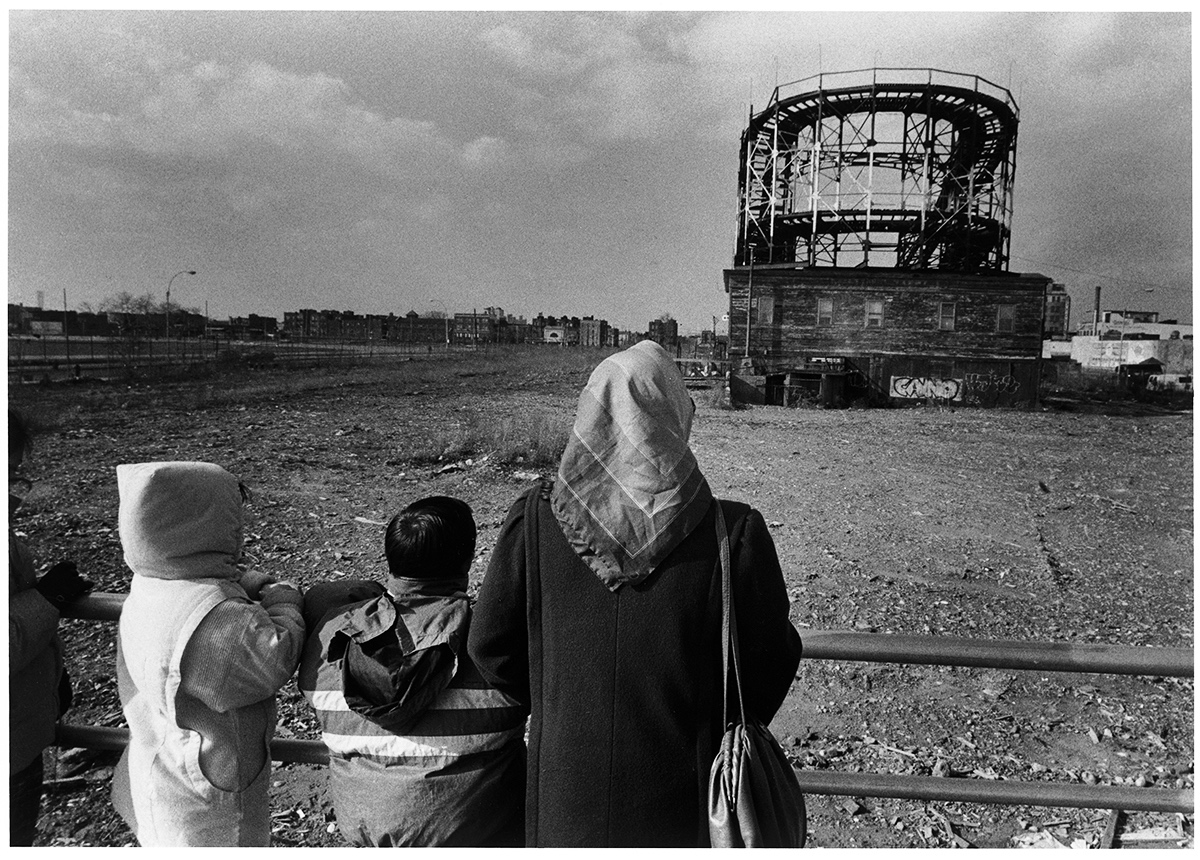A photographer’s lifelong love affair with Coney Island
- Text by Miss Rosen
- Photography by Harvey Stein

Street photographer Harvey Stein’s lifelong love affair with Coney Island began the first time he entered Brooklyn’s famed seaside playground. It was the late 1950s, and he was 14 years old.
“I didn’t like New York, it was too big, too noisy, hot and dirty,” the Pittsburgh native remembers. “Going to Coney was a treat… As we walked the crowded boardwalk at dusk on a simmering summer day, I was mesmerized by the people. I vividly remember a fistfight between two sailors in uniforms.”
Stein resolved to return to Coney Island someday, never imagining that he would do so more than a thousand times.
In 1970, Stein returned to “America’s Playground” for a class assignment, and was captivated by the eclectic characters drawn to sun, sand, and surf. Over the next half a century, Stein would amass a singular archive of charming vignettes, a selection of which are now in view in the new exhibition, Coney Island, An Eternal Romance.
“Coney Island is about people,” he says. “It’s a melting pot of all sizes, shapes, races, ages, religions, behaviours and occupations. The amusements, the sea and the open-air all impart a kind of freedom of behaviour I don’t see anywhere else… The happiness is palatable.”

Happy New Year man, 2010

Legs in photo booth, 1974
Because it offers the perfect blend of personalities, situations, and backdrops, Coney Island has always been catnip to street photographers like Stein. The promise of pleasure is just a mere train ride away, allowing New Yorkers of all backgrounds an escape from the harrows of everyday life.
“Every time I am there, something new occurs to photograph; whether it’s a wedding, a video being shot, models being photographed, a procession, or a Hasidic community gathering. It’s always surprising and exciting. The key is to be patient and spend time at Coney to understand its rhythms and pace.”
Through Stein’s lens, we witness a beguiling portrait of Coney Island as an ever-changing landscape that stays true to its roots despite the challenges it may face. Because it is so entrenched in the mythology of New York, the seaside amusement park and beach have survived fires, Spanish Flu, World Wars, economic depressions, gentrification and Hurricane Sandy. Now it faces its latest battle with the impact of Covid-19.
“When New York is doing well, Coney is doing well,” says Stein, finally. “When New York is going through a crisis, so too is Coney. When I began going, it was seedy, funky and sometimes dangerous, especially at night. It is now more family-friendly than in the past. Many of the ‘characters’ of Coney Island are no longer there, but it remains a fascinating place to spend the day.”

New Years Day run into the ocean

Amusement rider, 1990

Looking at the Thunderbolt

The Brooklyn Flyer at Luna Park

View from the Wonder Wheel

Coney Island sign and shadow, 2008
Harvey Stein: Coney Island, An Eternal Romance is on view online at Sous les Etoiles Gallery through July 18, 2020.
Follow Miss Rosen on Twitter.
Enjoyed this article? Like Huck on Facebook or follow us on Twitter.
Latest on Huck

Clubbing is good for your health, according to neuroscientists
We Become One — A new documentary explores the positive effects that dance music and shared musical experiences can have on the human brain.
Written by: Zahra Onsori

In England’s rural north, skateboarding is femme
Zine scene — A new project from visual artist Juliet Klottrup, ‘Skate Like a Lass’, spotlights the FLINTA+ collectives who are redefining what it means to be a skater.
Written by: Zahra Onsori

Donald Trump says that “everything is computer” – does he have a point?
Huck’s March dispatch — As AI creeps increasingly into our daily lives and our attention spans are lost to social media content, newsletter columnist Emma Garland unpicks the US President’s eyebrow-raising turn of phrase at a White House car show.
Written by: Emma Garland

How the ’70s radicalised the landscape of photography
The ’70s Lens — Half a century ago, visionary photographers including Nan Goldin, Joel Meyerowitz and Larry Sultan pushed the envelope of what was possible in image-making, blurring the boundaries between high and low art. A new exhibition revisits the era.
Written by: Miss Rosen

The inner-city riding club serving Newcastle’s youth
Stepney Western — Harry Lawson’s new experimental documentary sets up a Western film in the English North East, by focusing on a stables that also functions as a charity for disadvantaged young people.
Written by: Isaac Muk

The British intimacy of ‘the afters’
Not Going Home — In 1998, photographer Mischa Haller travelled to nightclubs just as their doors were shutting and dancers streamed out onto the streets, capturing the country’s partying youth in the early morning haze.
Written by: Ella Glossop